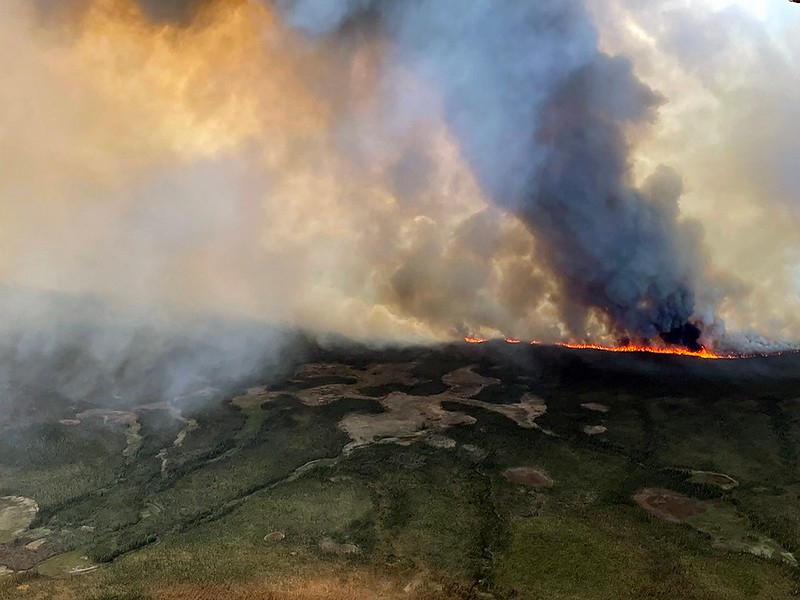GEOG Associate Research Professor Dong (Tony) Chen, Professor and Department Chair Tatiana Loboda, Ph.D. candidate Allison Bredder, in collaboration with researchers from NOAA and the Michigan Technological University, published the paper in Science of The Total Environment (IF: 10.754).
Wildfires are a common natural disturbance in high northern latitude regions. In recent decades, with substantial Arctic warming, they have intensified, as seen in this year's wildfires in Canada. With more than two months remaining in a typical fire season, 2023 has already become Canada's worst fire year in recorded history regarding burned area.
Until recently, few studies have focused on wildfires' impact on air quality. Funded by NASA's ABoVE program, the team of researchers examined how boreal wildfires affect regional and hemispherical air quality, with this paper as one of the outputs.
Based on Alaska, the team estimated wildfire emissions and smoke transportation to reconstruct daily PM2.5 concentrations during the fire seasons of 2001-2015. Comparing the fire-induced PM2.5 concentrations with ground-recorded PM2.5 data, they found wildfire to be the dominant driver of PM2.5 dynamics in Alaska during fire seasons.
These datasets have significant implications for conducting epidemiological analyses, linking wildfire activities to certain cardiovascular and respiratory diseases. This is particularly crucial in areas like Alaska, where ground-based air quality monitoring is rare.
Public domain image by National Interagency Fire Center. View from above the Hog Butte fire in Alaska provided by BLM AFS air attack Ryan McPherson.


